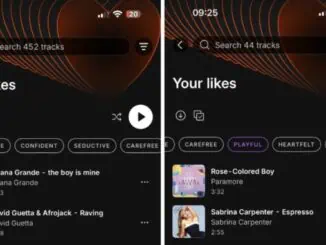
Up to 3 Bn streams in France are fake according to a recently published study by the Centre national de la musique (CNM). The study, Stream Manipulation 2021 estimated that that the share of fraud detected on the major streaming platforms in France was between 1% and 3% in 2021. In relation to market figures, this represents between 1 and 3 Bn streams detected as being fraudulent.
The study was commissioned by the French Minister of Culture to support parliamentary debates on a draft bill relating to the French law on the regulation and protection of access to cultural works in the digital age. The industry players impacted by this fraudulent practice were contacted to take part and included: platforms (Deezer, Spotify, Qobuz, Apple Music, YouTube, Amazon Music), producers and distributors (Universal, Sony, Warner, Believe, IDOL, Wagram), CMOs (Sacem), professional organisations (UPFI, SNEP, SMA, FELIN), music publishers, artists, managers, lawyers, media, and companies specialising in the subject.
Definition of stream manipulation
Stream manipulation of online plays can be defined as the artificial creation of online plays or views by human and non-human means with the aim of generating income, improving chart position and/or swaying a recommendation system (playlists, search). The study identifies the different types of stream manipulation on streaming platforms and highlights certain associated risks:
- A sharp increase in the number of streams recorded on a platform, without a proportional increase in the number of paying subscribers, automatically leads to a drop in the unit value of a stream and therefore a drop in the amount of royalties paid to rights-holders.
- Consumers trust the market less thus use the service less (impact on charts and recommendations) and trust platforms’ security systems less and fear that their account will be hacked.
- Apart from the artist’s reputational damage, fake streams disrupt artists’ algorithmic profiles as they weaken engagement rates thereby reducing an artist’s “recommendability”, and also disrupt the recommendation algorithm by providing misleading information, since fake users don’t behave like normal music fans.
- Several industry professionals reveal that they cannot currently rely on an artist’s platform performance (for signing an artist to a label, booking them for a show, or getting them on a radio playlist). This leads to a lack of trust in the platform-distributor relationship as well as in the market.
How the platforms detected fraud
Every platform said they had the technological resources to identify fraud but each one used a different method. Qobuz and Deezer applied their detection algorithms at the user account level – which can lead to some ‘false positives’ and Spotify applied it at the track and album level. Apple Music and Amazon Music indicated that they have invested in new technological solutions and have recruited new dedicated teams; meanwhile Spotify is developing informative tools for artists and labels.
Extent of fraud detected in 2021
Based on the data provided by Deezer, Qobuz, Spotify and the panel of distributors (Universal, Sony, Warner, Believe and Wagram, who represent more than 90% of Spotify’s top 10,000 and more than 75% of the overall volume of streams on Deezer), CNM found that the share of fraud detected on the participating platforms in France is between 1% and 3% in 2021. In relation to market figures, this represents between 1 and 3 Bn streams detected as being fraudulent. On Deezer and Spotify, more than 80% of streaming fraud occurs on the services’ long tail (outside the top 10,000), while on Qobuz fraudulent activity is mainly concentrated to the most-listened to tracks.
On the platforms that participated in the study, between 6 and 13% of abnormal streaming activity was detected as coming from the trial-period plan. Streaming fraud is mainly identified as coming from a computer (65% on Deezer and 31% on Qobuz) and the family plan amasses 54% abnormal streaming activity on Deezer.
On Spotify and Deezer, the most popular genre in the top 10,000 most-listened to tracks is hip-hop/rap (more than 50% on Spotify and 40% on Deezer). In terms of distribution, the majority of streaming fraud detected therefore comes from this genre (84.5% and 27.7% respectively). On Deezer, the share of streaming fraud detected is higher for ambient music (4.8%) and non-music tracks (3.5%). The data from distributors also confirms this trend.
On Spotify’s top 10,000 most-listened to tracks (supplemented with data from distributors), 96% of streaming fraud detected comes from new releases and 93% from the local catalogue. The share of streaming fraud detected on local new releases amounts to 0.46%. This figure is at 1.18% on Qobuz’s top 10,000, and 0.75% on Deezer.
Interviews with industry figures suggested that fraudulent methods are evolving and continue to improve but that holding fraudsters to account is difficult as the initiator (actor initiating the request) is rarely identified and identifiable.
The way forward
The CNM recommends that the recorded music industry should develop and adopt an inter-professional charter for the prevention of and fight against stream manipulation. It also suggests that regular audits could be set up in collaboration with the Pôle d’expertise de la régulation numérique (PEReN – the French national centre of expertise in digital regulation), to detect and analyse fraudulent streaming. CNM said it was committed to continuing to monitor the situation and it promised a new study will be carried out in 2024.
The Stream Manipulation 2021 (57pages) study can be downloaded in English here, and in French (Manipulation des écoutes en ligne ANNÉE 2021) here.




